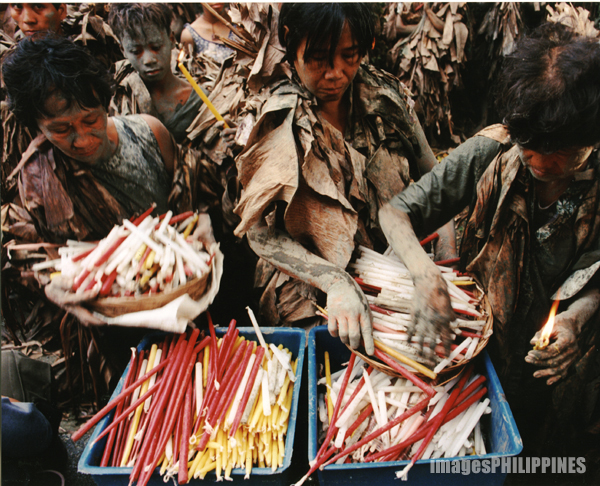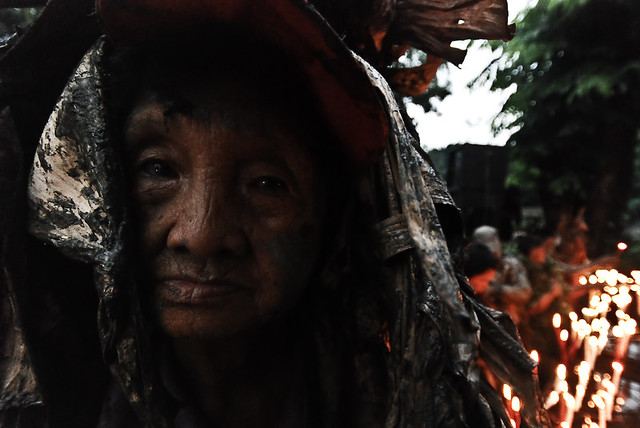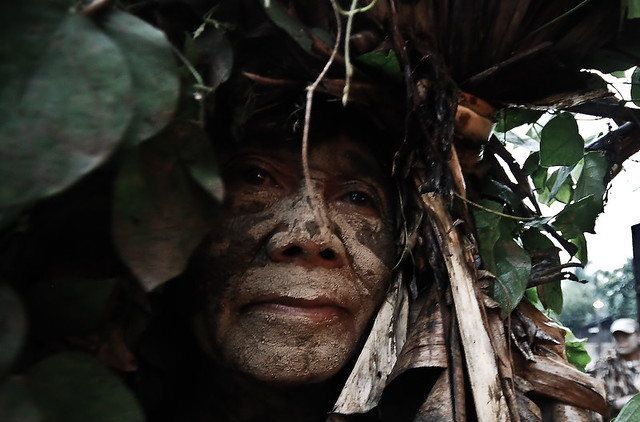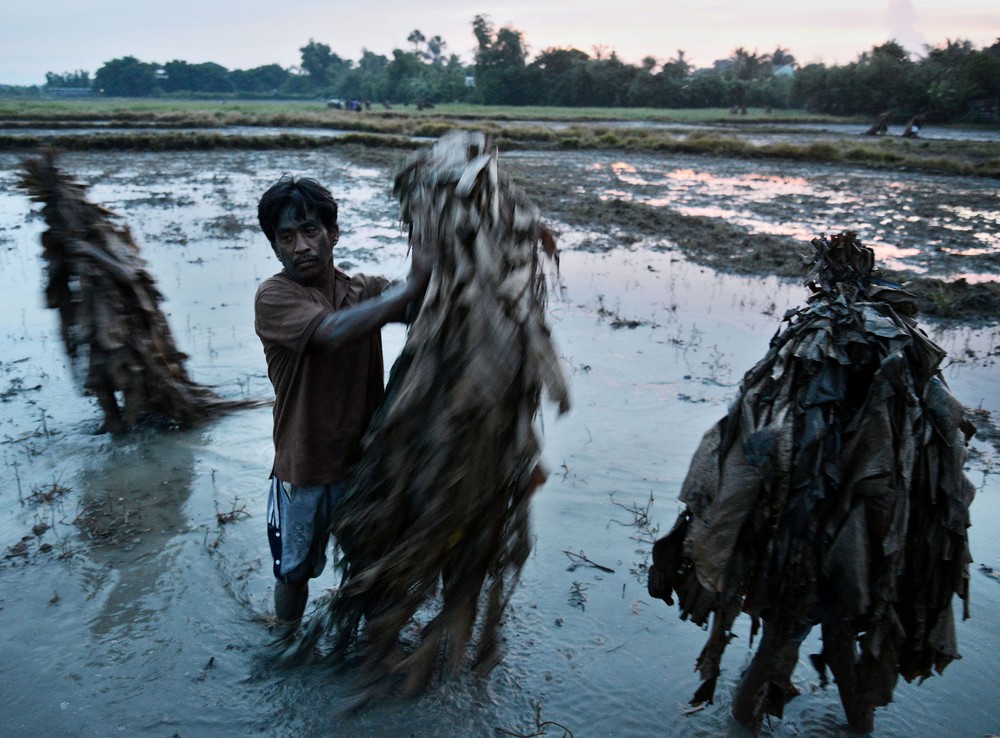
-
МјРЇСІИёСЖШИМі
-
 PASIGARBO SA SUGBO (Festival of Festivals)
PASIGARBO SA SUGBO (Festival of Festivals) 12,647
12,647 -
 Flores De Mayo in the Philippines
Flores De Mayo in the Philippines 12,222
12,222 -
 Ibalong Festival
Ibalong Festival 11,649
11,649 -
 Ati-atihan Festival11,513
Ati-atihan Festival11,513 -
 Gayon Bicol Festival11,380
Gayon Bicol Festival11,380 -
 MAGAYON FESTIVAL11,309
MAGAYON FESTIVAL11,309 -
 CARACOL FESTIVAL10,925
CARACOL FESTIVAL10,925 -
 PINYASAN FESTIVAL in CAMARINES NORTE10,535
PINYASAN FESTIVAL in CAMARINES NORTE10,535 -
 LANZONES FESTIVAL10,472
LANZONES FESTIVAL10,472 -
 Pasigarbo sa Sugbo10,230
Pasigarbo sa Sugbo10,230
TAONG PUTIK FESTIVAL
In Aliaga, Nueva Ecija, in Barangay Bibiclat, hundreds of devotees of
the village's patron saint, John the Baptist, transform themselves
into "mud people" -- literally "taong putik." The locals call the ritual
Pagsa-San Juan. Outsiders call it the Taong Putik Festival, an
event -- an experience -- that has recently caught the attention
and interest of the tourism sector.
Nobody knows exactly when the Taong Putik
Festival started. One legend says the image
of the patron saint which was brought to
Bibiclat by early Ilocano settlers, helped in
driving away poisonous snakes from the village.
The name "Bibiclat" came from the Ilocano word
"biclat" meaning snake. Another legend says that
when Japanese soldiers during World War II
were about to execute all the men in the
village in retaliation for the death of 13
fellow soldiers, it rained so hard that the
male villagers had to be herded into the
church to seek shelter. After a while, the Japanese
soldiers had a change of mind and set their
captives free. The residents attributed this to
a miracle of Saint John the Baptist, and vowed
to pay homage to him on his feast day by
wearing costumes patterned after his attire --
this time, using native materials.
HISTORY OF
TAONG PUTIK FESTIVAL
There are many stories about the history of the
�Taong Putik� Festival. Some of these are
the Scriptural Beliefs and the Story Version
told by elderly people.
SCRIPTURAL BELIEF:
According to the elderly residents, when
you will base this festival to the bible,
people are just trying to be like St. John
the Baptist. For them St. John symbolizes
dirtiness. As bible says, St. John was full
of mud and vines on his body when he
prepared the way for the Jesus and he
welcomes his with this appearance.

- ЁЄ

- ЁЄ
- ЁЄSalapan Festival
- ЁЄEmpanada Festival (Batac City)
- ЁЄPADUL-ONG FESTIVAL
- ЁЄKaumahan Festival in Barili
- ЁЄKAGASANGAN FESTIVAL
- ЁЄLalin Festival in Asturias
- ЁЄTinabuay Festival
- ЁЄGayon Bicol Festival
- ЁЄPINYASAN FESTIVAL in CAMARINES
- ЁЄMAGAYON FESTIVAL
- ЁЄBANAUAN FESTIVAL (BARANGAY.GUA
- ЁЄThe Tuna Festival in Gensan
- ЁЄPINTOS FESTIVAL BOGO CITY, CEB



- ЁЄ
- ЁЄ
- ЁЄCEBU WESTOWN LAGOON
- ЁЄGREEN LAGOON, COMPOSTELA
- ЁЄCALLAO CAVE
- ЁЄMOUNT PINATUBO IN PHILIPPINES
- ЁЄBATAN ISLAND in Batanes.
- ЁЄCALAGUAS ISLAND, CAMARINES NOR
- ЁЄAGHO ISLAND
- ЁЄCARAMOAN ISLAND IN CAMARINES S
- ЁЄSAMBAWAN ISLAND
- ЁЄPLACES TO VISIT IN LANAO DEL N
- ЁЄPLACES TO VISIT IN ZAMBOANGA C
- ЁЄPlaces to visit in Rizal Provi
- ЁЄHISTORIC TOWN OF VIGAN CITY, I














 ЧЪРкДхФФ ОпАЃЛѓДу ПРЧТ
ЧЪРкДхФФ ОпАЃЛѓДу ПРЧТ 12ГтПЌМг МвКёРкИИСЗ 1РЇ
12ГтПЌМг МвКёРкИИСЗ 1РЇ
 ГЛАд ИТДТ ОюЧаПј УЃБт
ГЛАд ИТДТ ОюЧаПј УЃБт
 ИЎОѓ ЧаБГ ЙцЙЎБт
ИЎОѓ ЧаБГ ЙцЙЎБт
 СжИЛПЁ ГЛАЁ ОЕ КёПыРК?
СжИЛПЁ ГЛАЁ ОЕ КёПыРК? УжАэАЁМККё РЬКЅЦЎ СёБтБт
УжАэАЁМККё РЬКЅЦЎ СёБтБт
 ЧіСіПЁМЕЕ ЧЪРкДхФФ!
ЧіСіПЁМЕЕ ЧЪРкДхФФ! ЧіСіПЁМ АЁДЩЧб
ЧіСіПЁМ АЁДЩЧб









 ЧЪРк ЦЏБо Ч§ХУ! ФСНУОюСі МКёНК
ЧЪРк ЦЏБо Ч§ХУ! ФСНУОюСі МКёНК















































